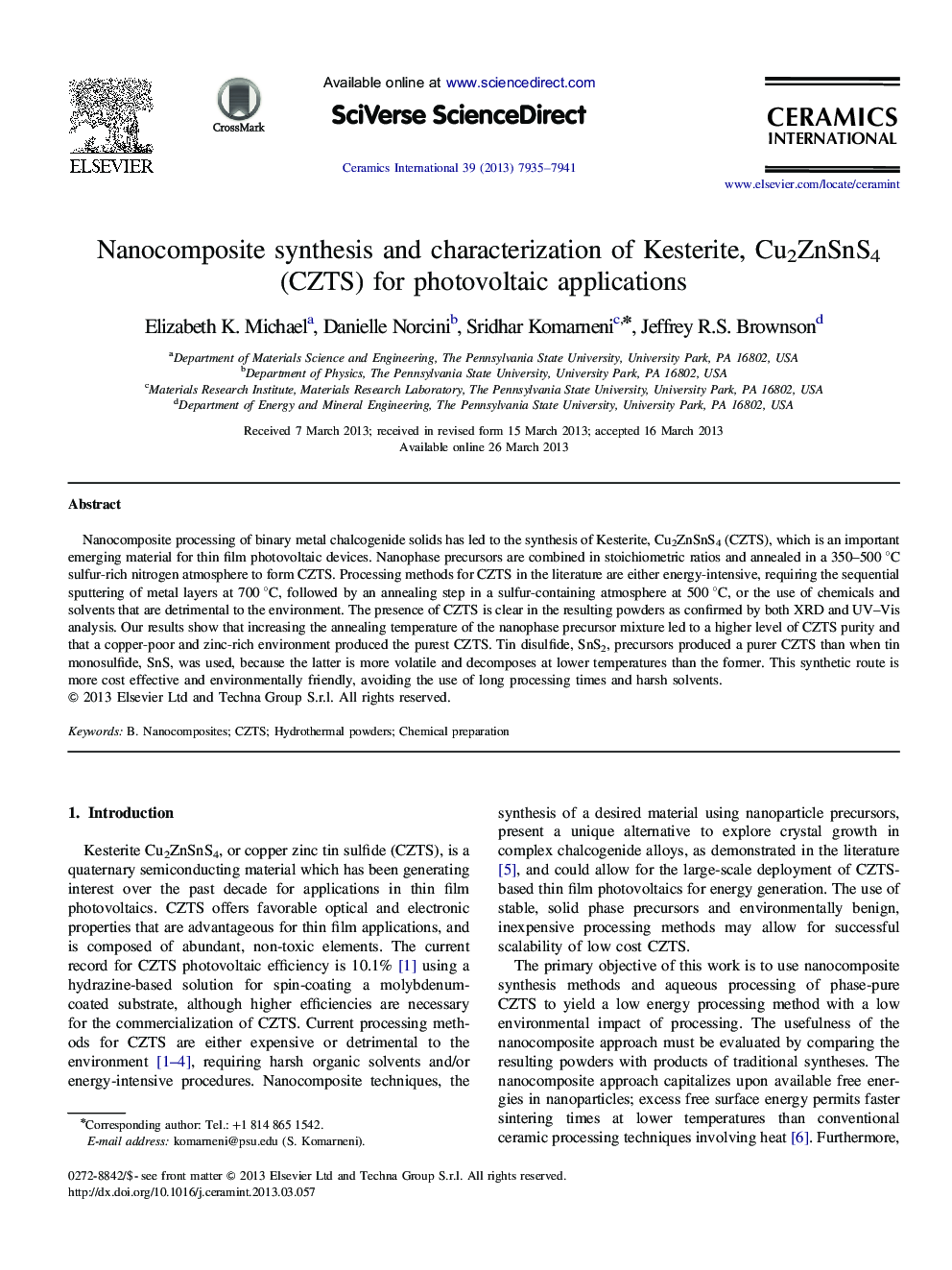| Article ID | Journal | Published Year | Pages | File Type |
|---|---|---|---|---|
| 10625686 | Ceramics International | 2013 | 7 Pages |
Abstract
Nanocomposite processing of binary metal chalcogenide solids has led to the synthesis of Kesterite, Cu2ZnSnS4 (CZTS), which is an important emerging material for thin film photovoltaic devices. Nanophase precursors are combined in stoichiometric ratios and annealed in a 350-500 °C sulfur-rich nitrogen atmosphere to form CZTS. Processing methods for CZTS in the literature are either energy-intensive, requiring the sequential sputtering of metal layers at 700 °C, followed by an annealing step in a sulfur-containing atmosphere at 500 °C, or the use of chemicals and solvents that are detrimental to the environment. The presence of CZTS is clear in the resulting powders as confirmed by both XRD and UV-Vis analysis. Our results show that increasing the annealing temperature of the nanophase precursor mixture led to a higher level of CZTS purity and that a copper-poor and zinc-rich environment produced the purest CZTS. Tin disulfide, SnS2, precursors produced a purer CZTS than when tin monosulfide, SnS, was used, because the latter is more volatile and decomposes at lower temperatures than the former. This synthetic route is more cost effective and environmentally friendly, avoiding the use of long processing times and harsh solvents.
Related Topics
Physical Sciences and Engineering
Materials Science
Ceramics and Composites
Authors
Elizabeth K. Michael, Danielle Norcini, Sridhar Komarneni, Jeffrey R.S. Brownson,
